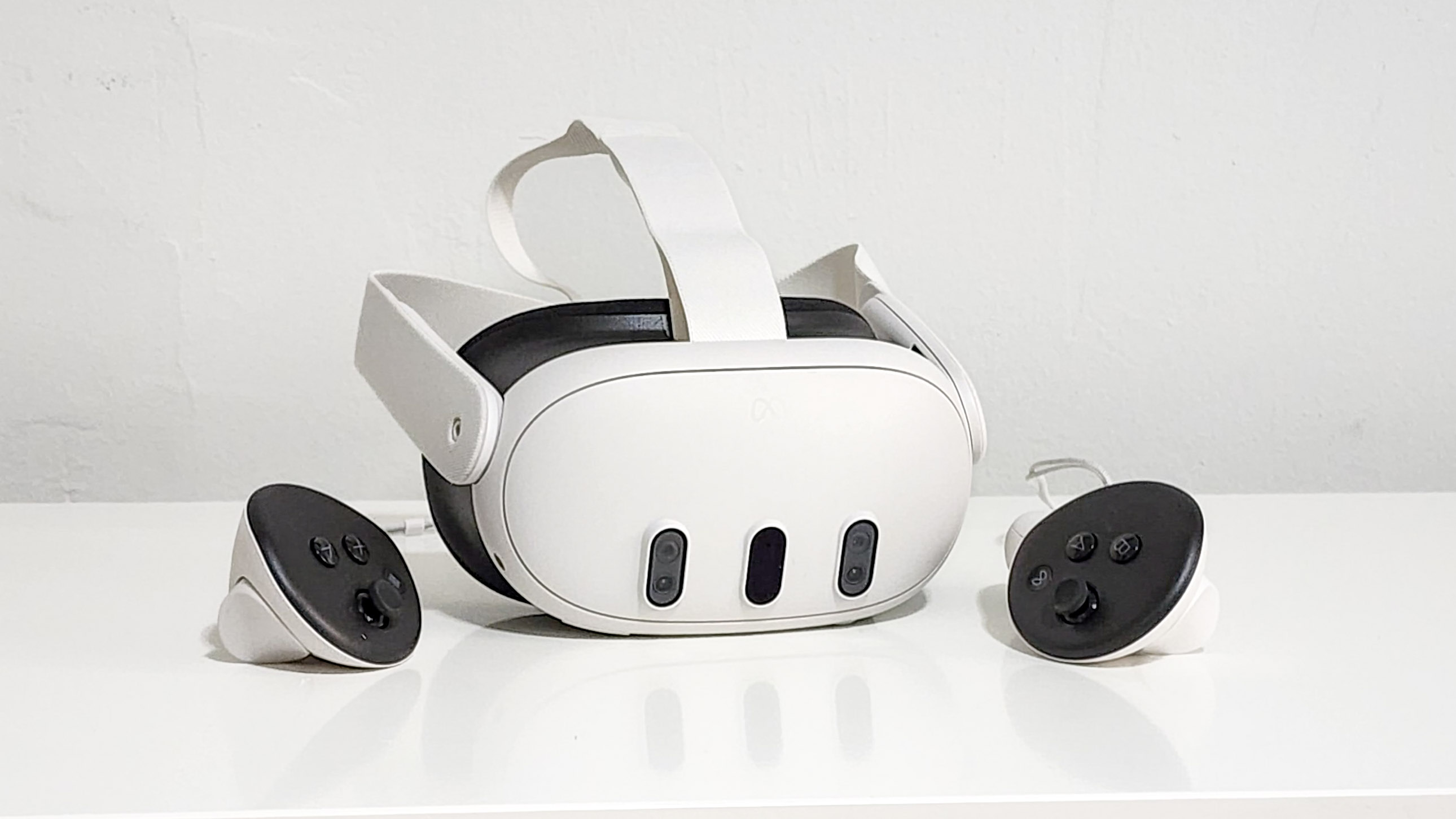
The Meta Quest 3 is a clear choice for the best VR headset that we've ever tested. That's the first — and most important — takeaway from our time testing it in the long-term.
But with the launch of the budget-tier Quest 3S, Meta is making this premium model of its headset even better by cutting the 128GB model and offering the 512GB Quest 3 for just $499. This is huge value for money when you see what you get.
The headset is much slimmer thanks to the use of pancake optics, which makes it noticeably more comfortable to wear. These pancake optics also give Quest 3 a better display resolution than any Quest headset that has come before it. It still can't match PC VR graphics, but it's getting close. It's certainly not the display's fault.
And the upgrades don't stop there. The Touch Plus controllers fit perfectly in your hand, full-color video passthrough is impressive, and the ever-growing app/game library gives you a lot to do — far more than you'd currently find on Apple Vision Pro.
When we started reviewing this headset back in October 2023, we felt a little underwhelmed by the broken promises of a mixed reality headset. But over the course of many software updates, this aspect has been improving dramatically — including the much-loved Travel Mode.
Ultimately, the Quest 3 is becoming a great VR/AR headset despite that it still underwhelms on occasion in hand tracking and battery life. Read on to see why you should still get this headset over any other despite its shortcomings. And if you do snap one up, don't forget to enhance your experience with the best Quest 3 accessories and best games to make the most of the hardware.
Meta Quest 3: Specs
Meta Quest 3: Price and availability
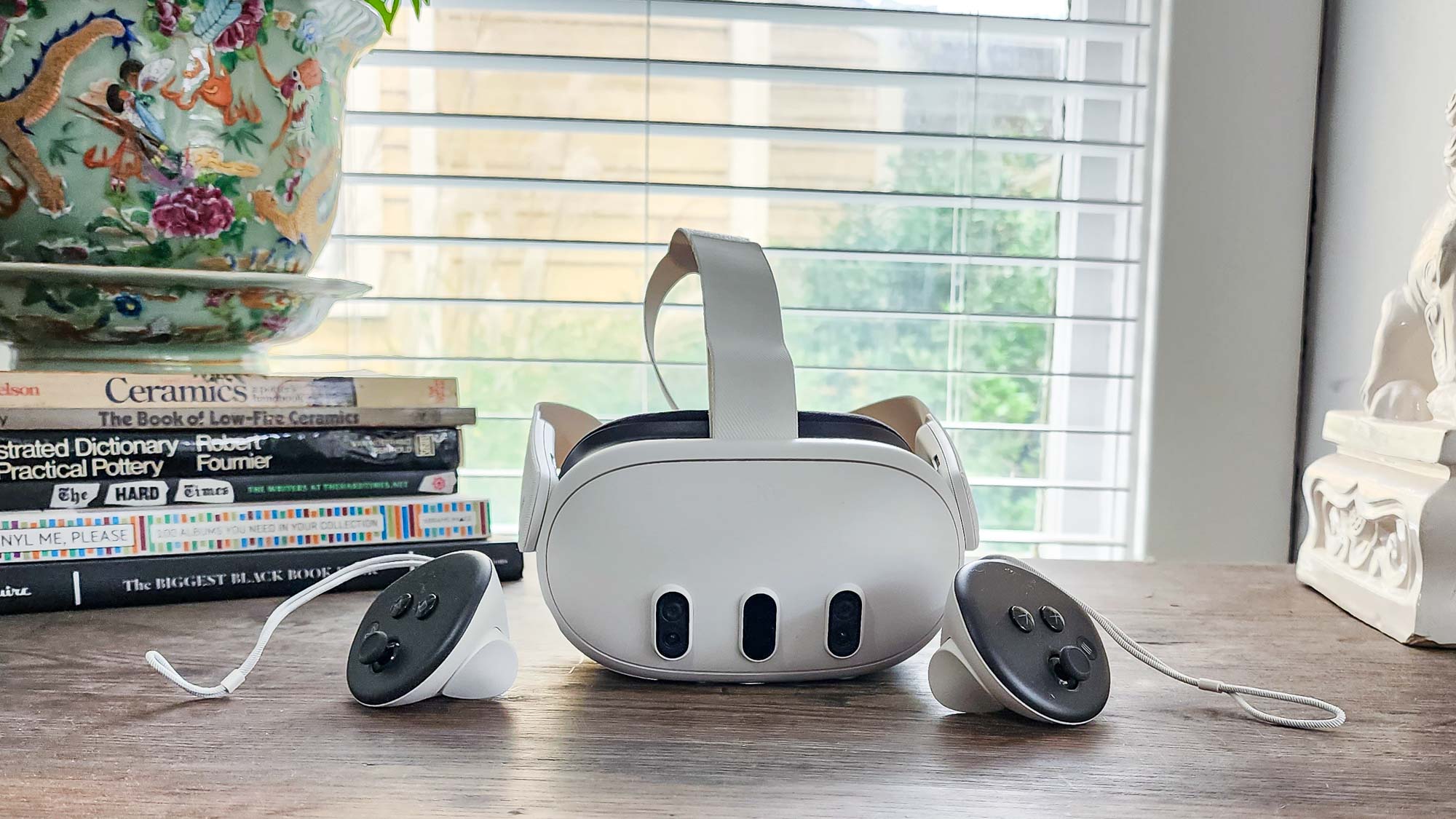
The Meta Quest 3 is available for purchase from Meta’s web store across the globe and select retailers — like Best Buy in the U.S. — depending on your region.
There are two Quest 3 models. The one I tried was the model with 128GB of storage which costs $499 / £479 / €549 / AU$799. If you want more storage, you’ll need to spend up for the 512GB model, which costs $649 / £619 / €699 / AU$949.
Meta Quest 3: Design
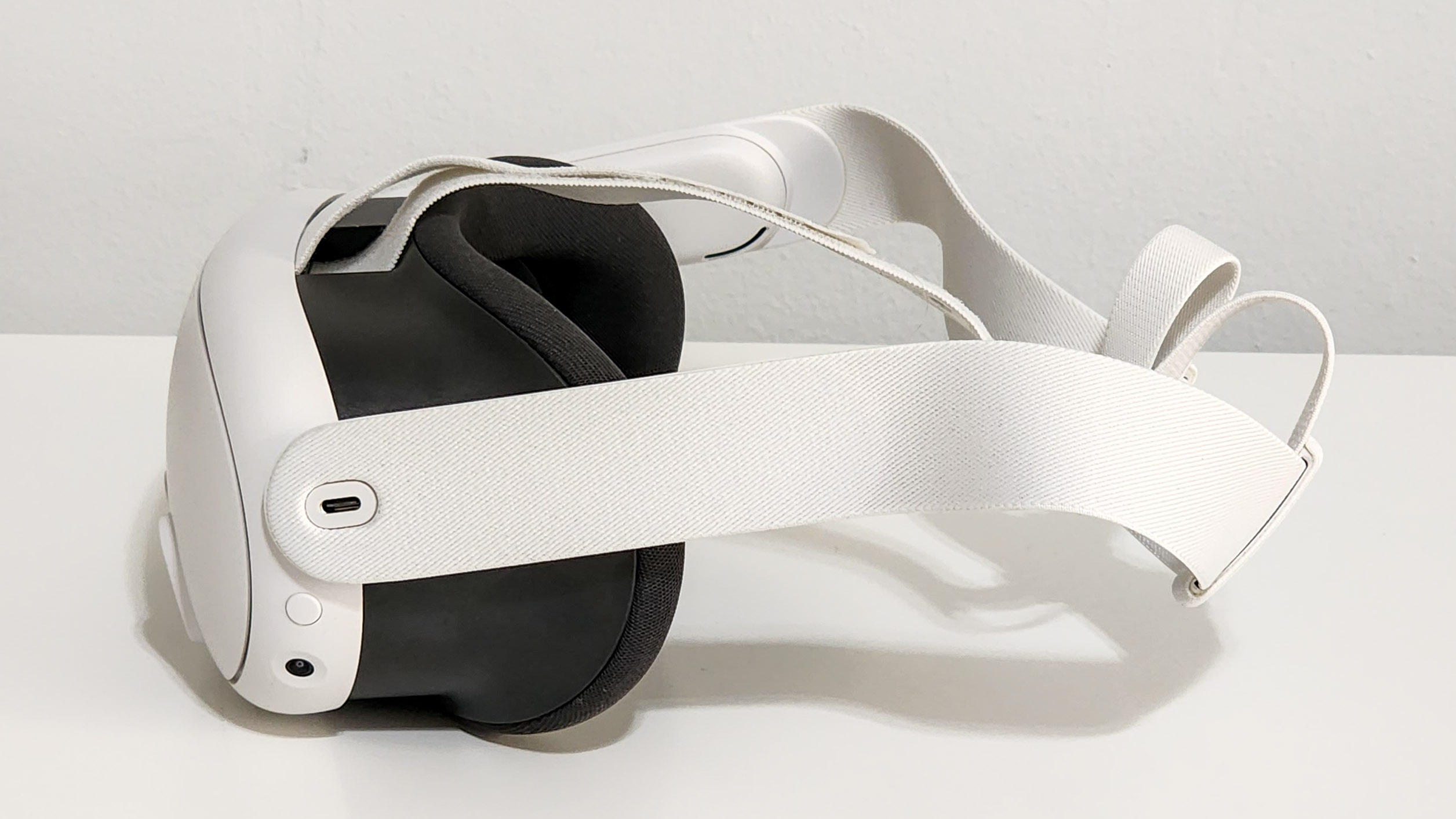
The Meta Quest 3 is noticeably slimmer, especially stacked up against the Meta Quest 2. Meta says that the visual interface (the visor) is 40% slimmer than its predecessor, and having worn both I definitely believe it.
This makes the Quest 3 more balanced ergonomically to wear. While I can’t say that I completely forgot I was wearing a headset on my face, I did feel a noticeable difference from the top-heavy Quest 2.
Thanks to the slimmer design, Meta was able to ditch the spacer for users like me who need glasses. Instead, you can just adjust the facial interface to give you more space if needed thanks to two black buttons inside the headset. There is also a new IPD wheel for adjusting the distance between the lenses. Personally, I found the stock settings allowed me to wear the Quest 3 with my glasses on easily, but adjustments were simple to make.
Meta Quest 3: Display
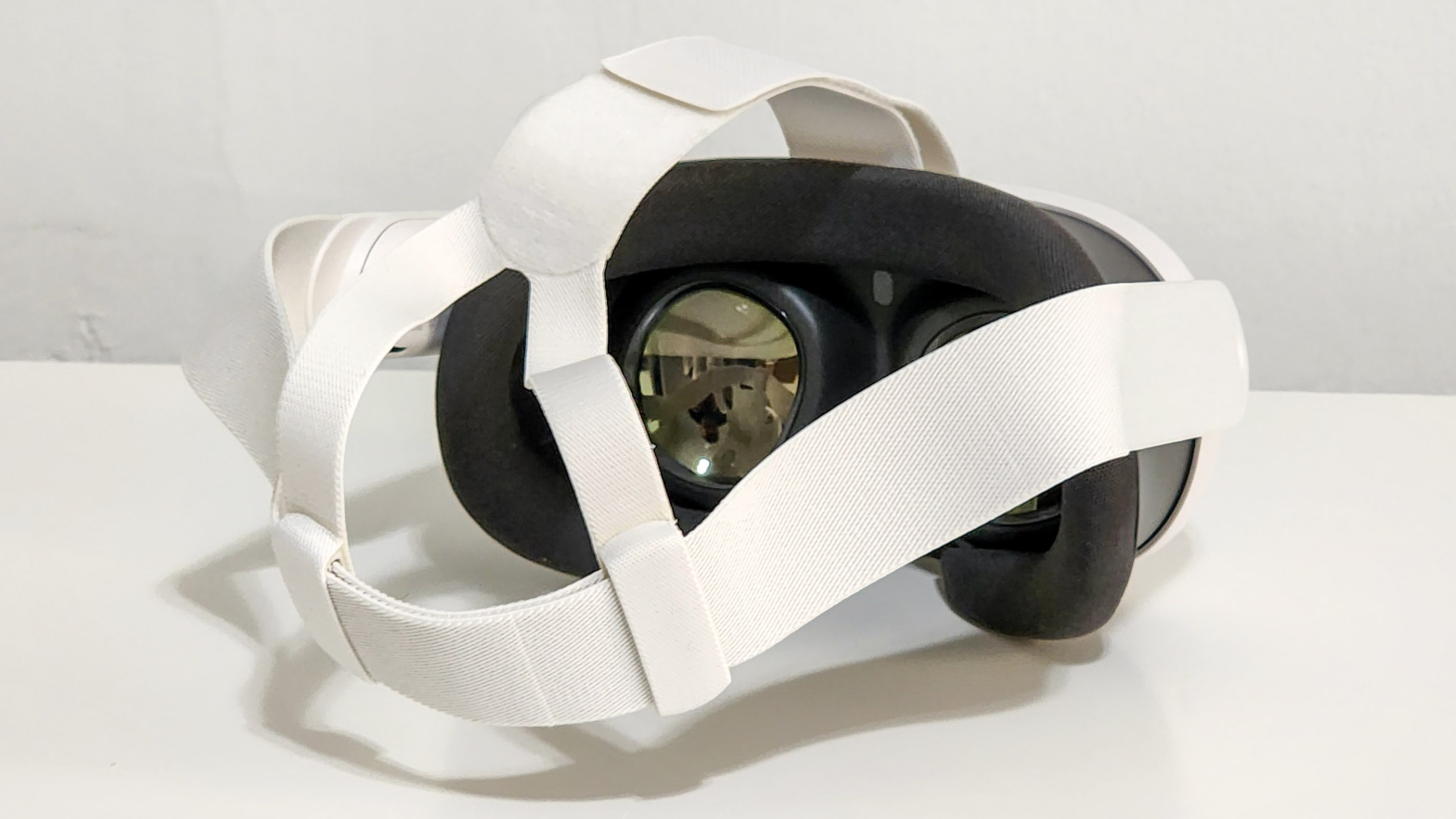
The slimming of the Quest 3 visor is in part thanks to the use of pancake optics. Also commonly known as pancake lenses, these work by layering thin lenses to reproduce images in a smaller space. The displays also boast a bigger resolution than the Quest 2.
Meta calls the new displays on the Quest 3 the 4K+ Infinite Display because the two LCD displays used combine for 4K resolution. Each eye has a resolution of 2,064 x 2,208 pixels, with 25 pixels per degree (PPD) when in virtual reality and a pixel density of 1,218 pixels per inch (PPI). The Meta Quest 2 has a resolution of 1832 x 1920 per eye.
The displays have a 90Hz native refresh rate though Meta says that developers can go up to an experimental refresh rate of 120Hz.
These improvements are noticeable. Colors are more vibrant on the Quest 3 than the Quest 2 and despite only being powered by a mobile chipset, the graphics are fairly impressive. It still doesn’t match what you can get from a PC VR headset but honestly, I didn’t find myself caring.
One place where you will notice a drop-off in graphical fidelity is in the video passthrough. PPD drops from 25 to 18 and you will see some judder when you look at your arms and hands. However, the augmented reality holographic overlays maintain their visually stunning look in passthrough, so even if your surroundings are in lower fidelity your game won’t be.
If you want to see the difference in action for yourself, I recommend trying out First Encounters, a demo you can find under “Get started with Meta Quest” in your Explore tab where little alien puffs invade your room and you have to capture them. Your room won’t look that great but the graphics produced by the game are still visually impressive.
Meta Quest 3: Controllers
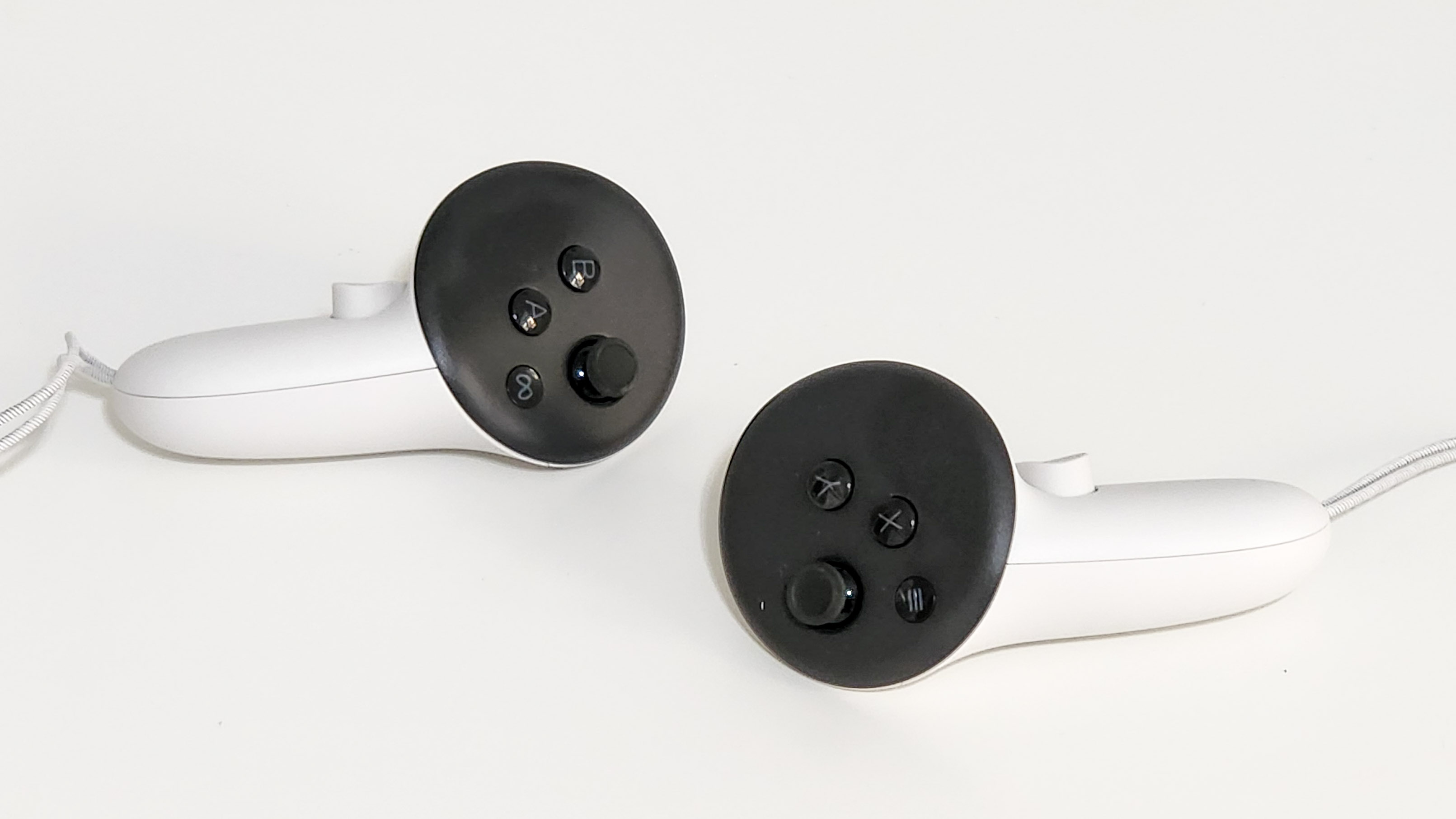
The new Touch Plus controllers may be my favorite thing about the new Meta Quest 3. They don’t look drastically different at first glance — aside from the noticeable absence of the tracking ring from the Quest 2’s Touch controllers. Instead, they adopt the ringless design of the Touch Pro.
But they fit perfectly in your hand. And coming from the Quest 2 it’s a noticeable step up, even though the Touch controllers weren’t awful ergonomically. Every time I pick them up, I marvel at the design.
Despite losing the tracking ring, the Touch Plus controllers still manage 6DoF tracking, which means you can walk around your playspace with no problem despite the lack of a tracking ring. The Touch Plus controllers also use TruTouch Haptics so you can feel resistance when using the controllers for better feedback and immersion. I personally wish the feedback was a little stronger and more nuanced — I often found myself forgetting it was even there. But it’s still a nice addition.
Aside from using the Touch Plus controllers, you can also use hand tracking to navigate the Quest 3’s screens and even in certain games and apps. You switch to hand tracking by double-tapping the sides of your controllers and setting them down.
Meta calls this feature Direct Touch and using it even briefly had me longing for my Touch Plus controllers and my haptic feedback. I like the idea of hand tracking, especially if I was just going to browse or watch videos on the headset and there’s definitely potential, but I never found the execution to be worth ditching my controllers.
Meta Quest 3 hands-on review: Setting up
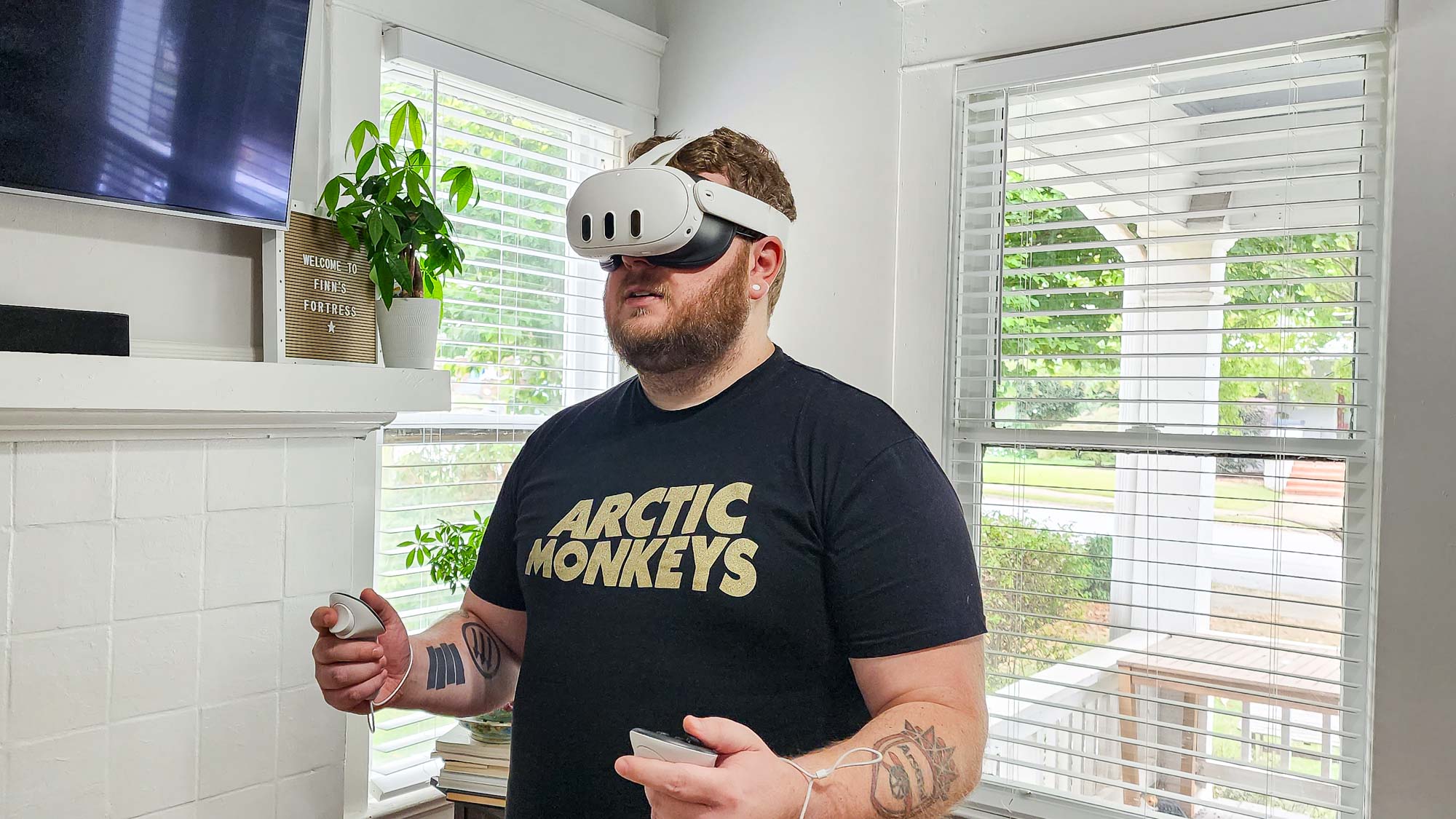
Setting up the Meta Quest 3 is pretty painless. Just pull out the headset, power it on, and the headset will guide you through the process, including pairing the Quest 3 with the Meta Quest app on your phone. You can even connect the headset to your home Wi-Fi network using a QR code on your phone, which you can see thanks to the headset’s full-color passthrough powered by two RGB cameras and a depth projector on the front of the visor.
These cameras and the Quest 3’s passthrough also come in handy when setting up your play space. You get two options for operating in virtual reality: Roomscale and Stationary. Roomscale pulls in the visuals of your room from the passthrough and gives you a suggested playspace that you can further adjust with your controllers. Stationary gives you basically a circle to work with, and is ideal if you’re seated when using the Quest 3.
Full disclosure — in setting up the Roomscale boundary I always needed to use my controllers to adjust things a little. I also found that walking around a bit in the room you’re establishing in your plays pace helped the automatic boundary set at the right limits.
The passthrough even takes things a step further for playing in mixed reality rather than virtual reality. During setup for your first mixed reality experience, you’ll be asked to highlight or create your room’s walls using the controller. After you’ve done that, you’ll be asked to look around the room so the headset can scan for any furniture. You’ll see a virtual mesh or polygons covering your furniture. Once that’s done you’re good to go for playing in mixed reality.
Meta Quest 3: Performance

Under the hood, the Meta Quest 3 is powered by the new Qualcomm Snapdragon XR2 Gen 2 processor, which Meta says gives the Quest 3 twice the graphics processing power of the Quest 2. You also get 8GB of RAM instead of the 6GB on the Quest 2.
While I don’t have benchmark testing to back up Meta’s claim, practically, I found the headset to be responsive. Whether playing Samba de Amigo, Pistol Whip or a mixed reality experience like First Encounters, the Quest 3 never lagged on me, even while downloading apps in the background.
You’re still not getting hyper-realistic graphics, but it’s definitely a step forward from some of the graphics on older Meta Quest 2 games. The NFL Pro Era app ran smoothly, but the Quest 2 graphics felt like stepping into an old arcade game.
Meta Quest 3: Games
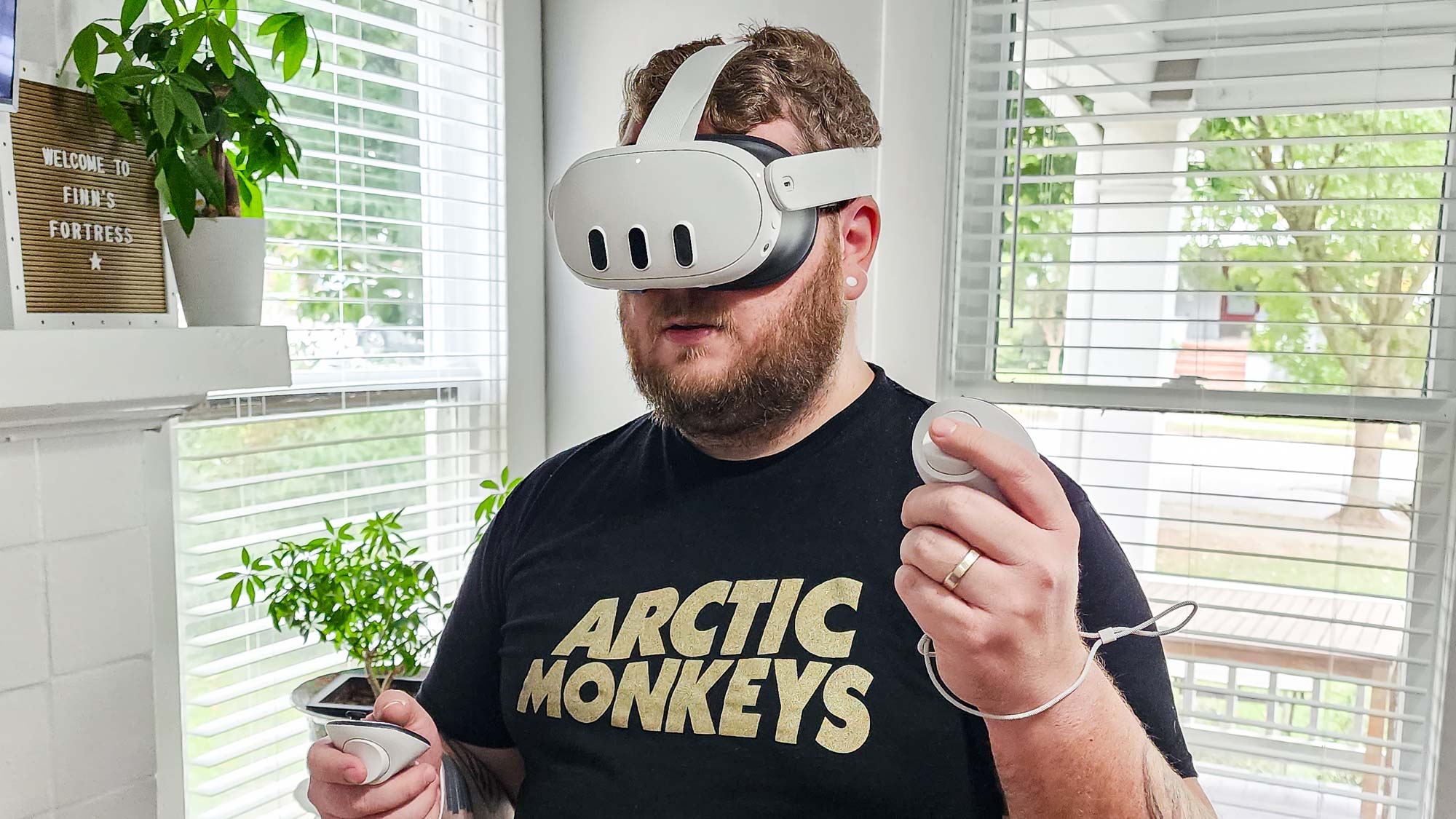
The Quest 3 gives you access to a ton of games — the entire 500+ catalog of Quest 2 games and apps in addition to new Quest 3 games. It also enhances some of the existing Quest 2 games for select games that can take advantage of the Quest 3’s superior performance.
While I haven’t been able to try everything the Quest 3 has available to play, I have experienced a good variety of titles. Classic Quest 2 games such as NFL Pro Era and Superhot VR are still as enjoyable as ever, and Pistol Whip gets a boost from the improved graphics of the Quest 3. Native Quest 3 games like Assasin’s Creed Nexus, are visually impressive as well.
The one thing that did not impress me? Xtadium, Meta’s app for viewing sporting events in VR. Maybe it’s because I could only view highlights, but it felt like a poor non-HD video feed was being superimposed over a backdrop rather than watching the feed from an HD or 4K 180-degree or 360-degree camera. My hope is once this feature shows live NBA games it will look better because as it is there’s no way I’d choose it over my TV, let alone a live game.
Meta Quest 3: Mixed reality features
Our biggest criticism of the Quest 3 over the past few months has been the fact that it doesn't really feel like a mixed reality headset. However, we always added "yet" because Meta committed to providing plenty of updates to really bring this element into its own.
Now, nearly a year later, we can start to see the fruits of the company's labor. Mixed reality experiences, such as using your headset as a laptop remote display and augmenting your surroundings with interactive elements, are becoming more presently available. On top of that, hand tracking is gradually improving, though more work can still be done to tackle the likes of challenging lighting conditions.
And then we have the new Travel Mode — tweaking algorithms in the immediate boundary around you in a seat to work through even the more challenging moments of in-flight turbulence. Being able to do split-screen app usage while 30k feet in the air is seriously impressive and makes any journey fly by.
The only outstanding issue is gaming, which sticks firmly in the VR space. That's not to say some experiences don't exist. First Encounters did a good job of integrating your environment into the gameplay with destructible walls. And Lego Bricktales, a tabletop experience was nice to experience in your surroundings than in a virtual world. I would argue that most tabletop experiences benefit from mixed reality, having now played two in Bricktales and Demeo. You just don't need to be taken fully out of reality to play them, so it's nice to remain a bit grounded.
But it's still a waiting game for more games that take full advantage of the Quest 3’s video passthrough, which did impress me when I got to use it.
Meta Quest 3: Audio
Meta says the audio range for the Quest 3 is 40% louder than the Quest 2 and that the Quest 3 produces 3D spatial audio with enhanced clarity and bass. In my testing, I never needed to crank up the volume. It was plenty loud as is.
In fact, it was so loud that you could definitely tell I was using it if you were in the room with me. So if you want some privacy, either connect a pair of wired earbuds through the 3.5 mm headphone jack. Unfortunately, you cannot connect most wireless earbuds despite Bluetooth 5.2 support due to latency issues. Instead, you'd need to pick up earbuds like the Soundcore VR P10 wireless earbuds which use a USB-C dongle to ensure latency isn't an issue.
I also definitely noticed the spatial audio. In First Encounters and Dungeons of Eternity, it was very helpful in determining where enemies were spawning or coming from. In games like Samba de Amigo and Pistol Whip, it also provides full, rich sound — great for music-driven rhythm games — but the real advantage for me came in games where being aware of your surroundings matters.
Meta Quest 3: Battery life
Meta says the Quest 3 has “about the same” battery life as the Quest 2. Overall battery life is rated for 2.2 hours of average use, but that number shifts depending on device usage and settings.
Personally, I managed to bring the Quest from 100% battery to dead in 1 hour 57 minutes. During this time, I played a handful of Quest 3 and Quest 2 games and watched probably 30 minutes of District 9 using the Pluto TV app. Once it’s dead you can charge the Quest 3 in about 2 hours.
Meta Quest 3 review: Verdict
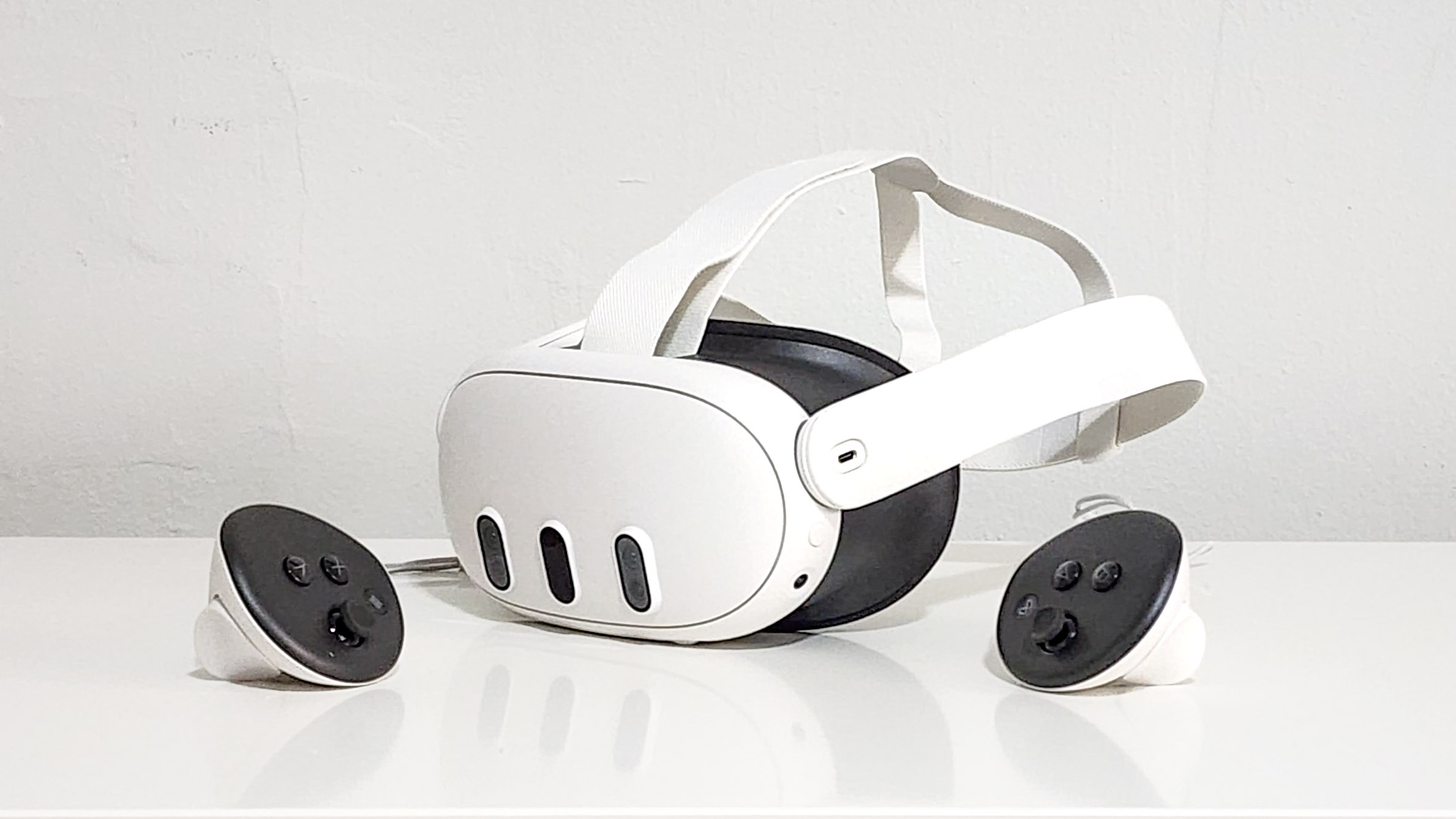
The Meta Quest 3 is a much better Quest 2 successor than it is a groundbreaking mixed reality headset. It’s a clear improvement — thinner, lighter, more comfortable to wear and more comfortable to use than the older Quest 2. And the display resolution is a noticeable step up. But unfortunately, we were promised a mixed reality headset, and while the Quest 3 definitely delivers fairly impressive full-color video passthrough, it doesn’t deliver many opportunities to put this feature to use.
If I wanted to buy a VR headset or wanted to recommend someone a VR headset to buy, it’d be the Quest 3. Of that, there is no doubt. We didn’t even get into the fact that despite its standalone design you can connect it to a PC to play nearly all of the best VR games if you buy the optional Link cable or Air Bridge accessory, which is definitely a point in favor of the Quest 3 over PC VR headsets or the PSVR 2. The problem is that it doesn’t make me want to recommend VR headsets in general any more than the Quest 2. And for that, I have to knock it down a peg. Still, if you want the best VR headset out there, the Quest 3 is it.







